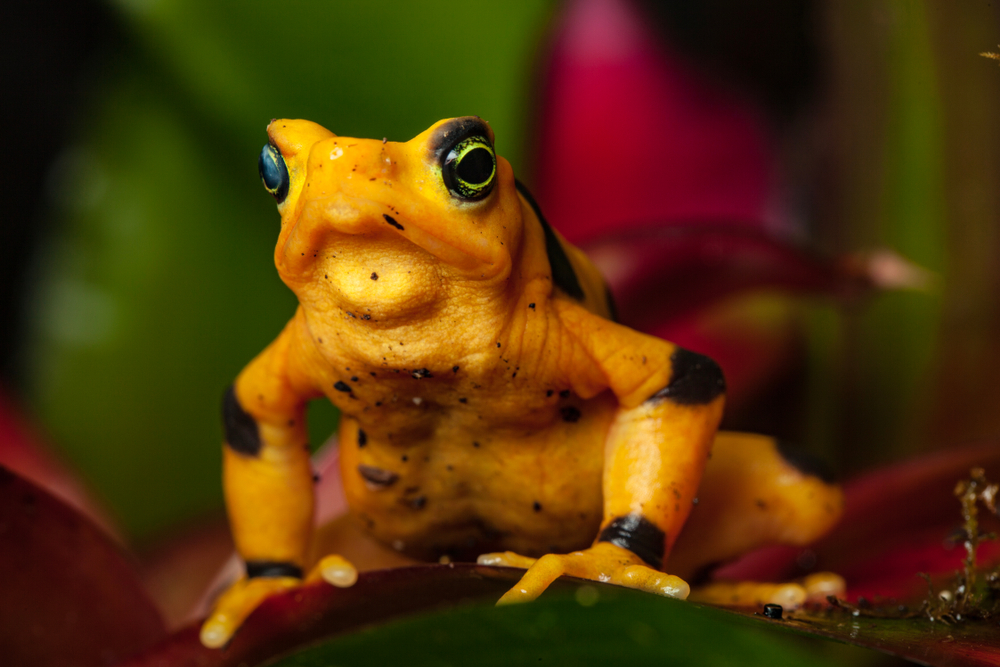Sometimes, you have to fake it ‘til you make it. That’s the guiding principle behind Batesian Mimicry. In this evolutionary process, a harmless species evolves to resemble a more dangerous species, warding away potential predators.
For many predator-prey pairs, evolution is a multi-generational battle. The prey evolves a hard shell; the predator evolves shell-shredding fangs. The prey evolves a toxin in its bloodstream; the predator evolves an antitoxin.
Some prey species disguise their adaptations, but others want to make it as clear as possible to potential predators: “Mess with me, and you’ll regret it!” This is how aposematism evolves. This refers to physical warning signs developed by certain species to warn off predators.
Take the gorgeous, eye-catching shade of the Panamanian golden frog (Atelopus zeteki). Colored as if using leftover paint from a caution sign, the golden frog (it’s actually classed as a toad, just to confuse things) is crammed full of toxins. Large doses cause massive seizures followed by circulatory and respiratory system collapse.

The panamanian golden frog (Atelopus zeteki)
Image Credit: K Hanley CHDPhoto/Shutterstock.com
Any snakes or other predators snacking on a golden frog will quickly not be able to snack on anything else ever again. Other predators learn to avoid such brightly colored prey.
There’s also some evidence that aposematism exploits an innate feature of some predators to avoid brightly colored prey – which would explain how aposematic coloring can evolve before predators learn to associate coloration with risk.
Batesian mimics are named after 19th-century naturalist Henry Walter Bates. Bates conducted his pioneering research in South America, so it’s fitting that we next move around 1,000 km (620 mi) south, to northern Ecuador.
Here, predators have learned to quake in fear at the sight of the Ecuador poison frog (Ameerega bilinguis). In the same region roams the sanguine poison frog (Allobates zaparo). The latter frog looks uncannily similar to the Ecuador poison frog, sharing its distinctive two-tone coloration. Importantly, only the Ecuadorian frog is actually toxic. The sanguine frog is a Batesian mimic. By adopting the coloration of its more poisonous distant cousin, the sanguine frog has gained the evolutionary benefit of being avoided by predators who can’t tell the two apart.
The sanguine frog’s deception only works if it maintains a delicate balance with its toxic counterpart. If the sanguine frog becomes widespread, predators who take the risk and eat a brightly colored frog are more likely to find themselves unharmed. Over time, this will lead to more brazen predation, impacting both frogs’ populations.
Batesian mimics are not the only mimics of the natural world. Müllerian mimicry involves a physical similarity between two harmful species. Batesian mimics represent a specialized form of evolution that shows how this important process can affect more than one species simultaneously.
Source Link: What Is Batesian Mimicry?